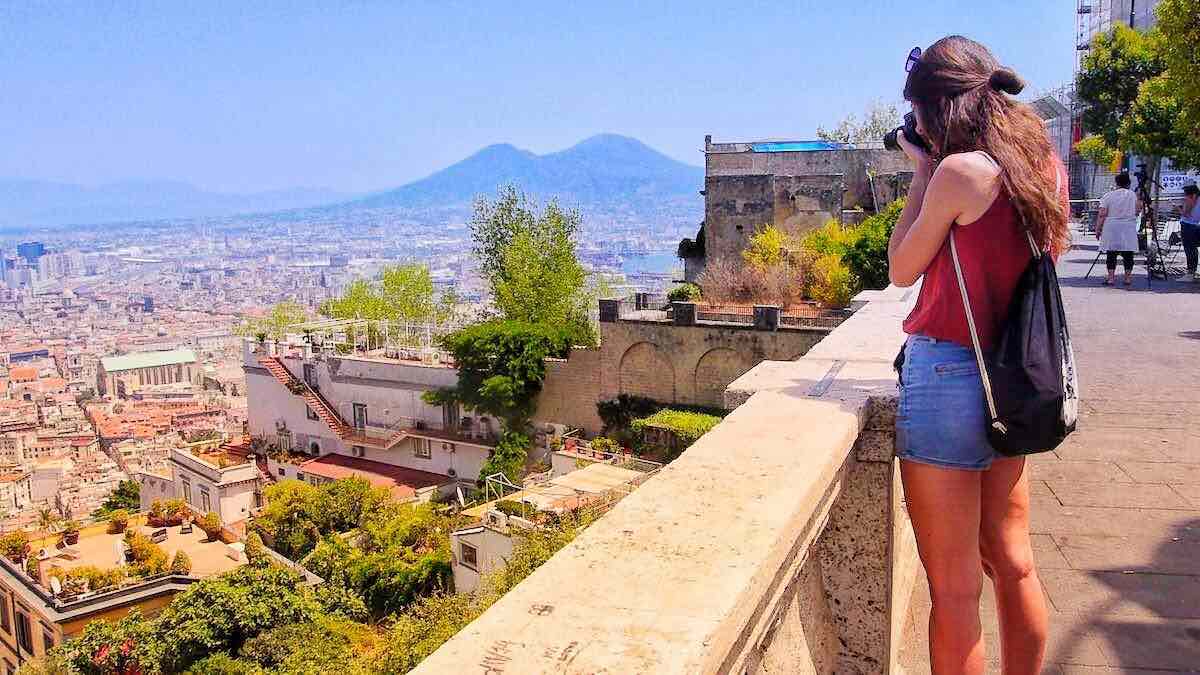In this post, I will reveal which are the best cities near Rome. As someone who grew up in the Eternal City and has a passion for travel, I have always spent plenty of time exploring what the surroundings of Rome have to offer.
The most important factor is that Rome is in an excellent location for discovering some of the most beautiful cities in northern and southern Italy.
I am about to tell you about what are and how to visit from Rome famous art cities like Florence and Naples and smaller cities like Viterbo and Florence.
I cannot leave out Gaeta, which stands out on an extraordinary coastline with crystal clear sea, and Chieti, a quiet town in Abruzzo rich in history and great food. But there are more.
I have visited all these places I am telling you about several times and will return again, because of natural and architectural beauty one can never get tired.
Stunning cities near Rome
1. Viterbo
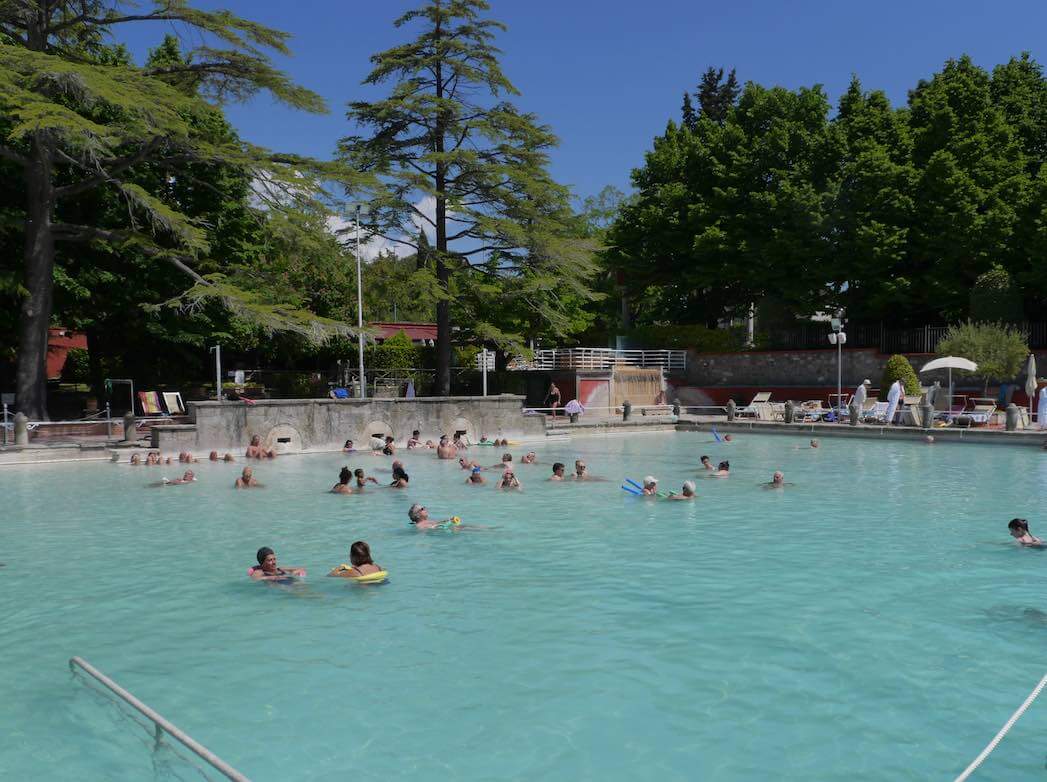
Distance from Rome: 100 km
By train (Trenitalia): 1.30 hours
Viterbo is among the most underrated cities north of Rome. I put it first because it is basically my favorite-I come here every month to relax in the thermal baths or to walk around the quiet medieval old town.
The food is certainly not to be underestimated as well. Delicious local dishes such as homemade pasta, mushrooms, sheep’s cheese, and fresh sautéed vegetables. Here you will find all the typical foods of the Tuscia area, famous for its forests and evidence of Etruscan civilization.
Intact, ancient defensive walls encircle Viterbo’s historic center. These walls feature historic gates that lead to piazzas housing stunning churches, palaces, and fountains and fountains crafted from peperino marble, a stone that defines Viterbo’s urban architecture.
Viterbo is not tiny but not big either; part of the historic center is interdicted to vehicle traffic, so it will be a pleasure to walk here.
If you’re traveling by car, leave it at the free parking on Via Faul and use the large elevator to ascend to the upper part of the city. This brings you to the heart of the San Pellegrino Neighborhood, Viterbo’s medieval quarter. The most beautiful spots in the neighborhood are the Piazza San Lorenzo with the Cathedral and the Palace of the Popes and the Piazza San Pellegrino.
Viterbo served as a haven for several “popes” during a historical period when Rome was unsafe for them. This earned the city the nickname “city of the popes.”
The National Etruscan Museum housed in the majestic Rocca Albornoz is well worth a visit, and is another of the places in Viterbo that I visit often.
Walking around will make you hungry: refresh yourself at one of these restaurants I know
- Il Gargolo in the pretty Piazza della Morte, if the weather is nice.
- Il Labirinto, for some of the best pizza in town
- Il Giardino del Papero for the romantic atmosphere
Where to stay in Viterbo
Do not miss the opportunity to stay in the historic center of this ancient and fascinating city. The B & B La Fontaine offers rooms in a historic residence.
2. Rieti


Distance from Rome: 79 km
By train (Trenitalia): 2 hours
Rieti, rooted in ancient tradition, is considered the ‘geographical navel‘ of Italy due to its central position. According to legend, it was founded by the goddess Rea, protector of nature and animals, giving rise to the name ‘Rieti.’
The picturesque countryside stretching between the two cities of Rome and Rieti is known as Sabina, a region once inhabited by the Sabines before Roman influence. Sabina extended across Lazio, Umbria, and Abruzzo.
The Romans assimilated the Sabines by the 4th century BC. The tale of the ‘Rape of the Sabine Women’ recounts how deceit lured Sabine women to events, resulting in their kidnapping to establish a Roman-Sabine lineage. The Romans reclaimed the Rieti plain, cradling the Velino River that gracefully winds through the city. Rieti’s countryside is highly productive, yielding prominent products like wine, oil, and cheese.
Surrounded by mountains and pristine landscapes adorned with forests, Rieti hosts four sanctuaries established by St. Francis. These become pilgrim destinations and trekkers’ havens. The monasteries connect via paths retracing the Saint’s footsteps, accommodating walking, cycling, and horseback exploration.
Mount Terminillo (2217 meters), a beloved mountain and skiing haven, towers nearby, drawing Rome’s residents and neighboring enthusiasts. It holds some of the most popular hiking trails near Rome.
As you pass through Rieti, the formidable 13th-century defensive walls and ancient city gates—Porta d’Arci, Porta Conca, Porta Romana—captivate attention. In Piazza San Rufo, adorned with ancient structures, a modern monument signifies Rieti’s role as Italy’s geographic center.
The Velino River and its bridges offer leisurely strolls, enticing relaxation along the tranquil banks.
Where to stay in Rieti
The Acque del Velino B&B is located right in the historic center.
3. Perugia

Distance from Rome: 172 km
By train (Trenitalia): 3 hours
Perugia, the capital of the Umbria region, lies at the center of the Italian peninsula. Known as the green heart of Italy, Umbria’s landlocked expanse lures slow travelers seeking hills, agriturismo stays, and indulgence in local delights like wine and oil.
Perugia goes beyond this allure with its abundant millennial history, showcasing well-preserved ancient sites. Moreover, it teems with youthful vibrancy due to the 14th-century-founded University of Perugia and Italy’s largest University for Foreigners.
At the core of the city, Piazza IV Novembre houses the Fontana Maggiore, a central masterpiece featuring pink and white stone basins adorned with statues and bas-reliefs portraying city founding, history, agriculture, and biblical tales. Once fed by the Monte Pacciano aqueduct, the fountain now offers an elevated walk on the aqueduct’s upper part, an enchanting city stroll commencing from Porta Sant’Angelo.
This square also hosts the 14th-century Cathedral of San Lorenzo, a religious pilgrimage site where a Madonna-associated ring resides. The cathedral encompasses the Capitular Museum, offering access to an archaeological area that reveals Perugia’s stratifications: Etruscan, Roman, late antique, and medieval.
Perugia’s hilltop presence within the Tiber plain marks its history: conquered by Umbrians, Etruscans (7th century BC), and later Romans (3rd century BC). Noteworthy Etruscan sites include the Etruscan Well, the Etruscan Door (a part of Perugia’s walls), and the Hypogeum of Volumni.
The city is also famed as the birthplace of Bacio Perugina, the celebrated hazelnut-filled chocolate. The Perugina Factory, located just beyond the historical center, offers guided tours of about an hour, showcasing Bacio’s creation and other products.
Perugia is so charming that it needs to be on your Umbria bucket list.
Where to stay in Perugia
The Chocohotel is inspired by chocolate!
4. Chieti

Distance from Rome: 198 km
By train (Trenitalia): 3 hours
Chieti stands as one of Italy’s oldest cities, reputedly founded by the legendary Greek hero Achilles. It is one of the most beautiful cities in Abruzzo, an underrated Italian region featuring spectacular nature.
According to legend, Achilles named the city ‘Teate’ (later becoming Chieti) in honor of his mother Teti. It is within this city that the National Archaeological Museum of the Abruzzo region resides, with Chieti standing out as one of its most exquisite cities. Often dubbed the ‘Terrace of Abruzzo,’
Chieti graces a hill 330 meters above sea level, affording breathtaking views of both the encircling mountains and the sea. From here, you can conveniently access the splendid beaches of Abruzzo nestled along the Trabocchi Coast and the extraordinary Majella National Park.
Abruzzo, offering a rich tourist experience, lies beyond the usual paths of foreign travelers. This doesn’t mean it lacks points of interest. Quite the contrary. With three national parks and 150 kilometers of coastline, it becomes an ideal summer destination in Italy, offering respite from the scorching heat and opportunities for family relaxation.
Chieti’s most captivating segment is Chieti Alta, where the ancient Roman Acropolis once reigned. Today, it’s a historic center adorned with graceful structures like the Palace of the Chamber of Commerce and Fasoli Palace. In Chieti Alta, vestiges of ancient Roman temples from the 3rd century AD and a Roman amphitheater from the 1st century emerge.
The Museum La Civitella weaves the tale of Chieti’s birth and evolution, unveiling artifacts discovered in the area once inhabited by the Marrucini people.
5. Florence

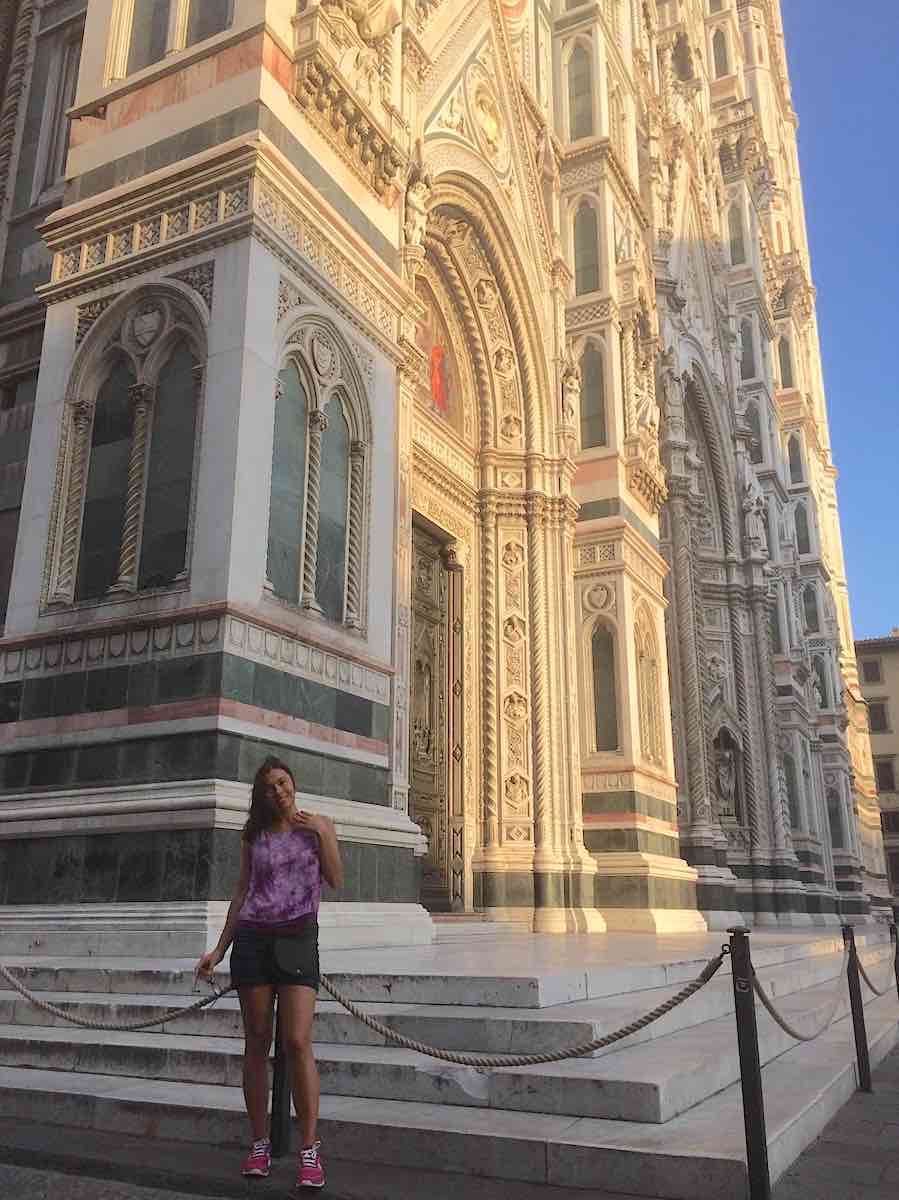
Imagine yourself in the midst of your Roman escapade, a traveler with an appetite for authenticity and artistry. A short train journey away, Florence awaits, a city that prides itself on offering a different kind of travel experience.
I myself visit Florence to forget the chaos of Rome. After all, Renaissance architecture has precisely the virtue of bringing harmony to the soul of those who pass through it.
The best things to do in Florence have to do with art and food tasting.
As you wander its narrow streets and charming squares, Florence’s history unfolds before you. Its architecture seamlessly blends Gothic and Renaissance styles, with the iconic Duomo standing as a testament to the city’s unique artistic journey.
And then, there’s the Accademia Gallery, where the renowned “David” by Michelangelo commands attention. But Florence’s artistic treasures extend beyond marble.
Botticelli’s masterpieces, such as “The Birth of Venus” and “Primavera,” reside here, casting a spell with their ethereal beauty. These artworks encapsulate the spirit of Florence—a city that has nurtured and celebrated creativity throughout the ages.
However, Florence’s charm isn’t solely found in its museums. The Palazzo Vecchio, a grand palace with a rich history, looms over the Piazza della Signoria. Its regal façade hides secrets that whisper of political intrigue and artistic genius. Stepping inside, you’re not just exploring a building; you’re traversing time, walking in the footsteps of Medici rulers and admiring the grandeur of the Salone dei Cinquecento.
While Florence has its fair share of iconic spots, it’s the hidden gems that make it truly special. The Boboli Gardens, a lush escape from the urban bustle, offer a tranquil haven for reflection. Meanwhile, the Mercato Centrale is a paradise for foodies, where the aroma of fresh produce and artisanal treats beckons.
Florence doesn’t merely dwell in the past. The Oltrarno district buzzes with local artisans and their crafts, from intricate jewelry to handcrafted leather goods. Cafés hum with conversations that blend Italian tradition with modern perspectives.
Dear traveler, if you seek a genuine experience, Florence beckons. It’s a city that celebrates its storied history while inviting you to be part of its present.
6. Naples
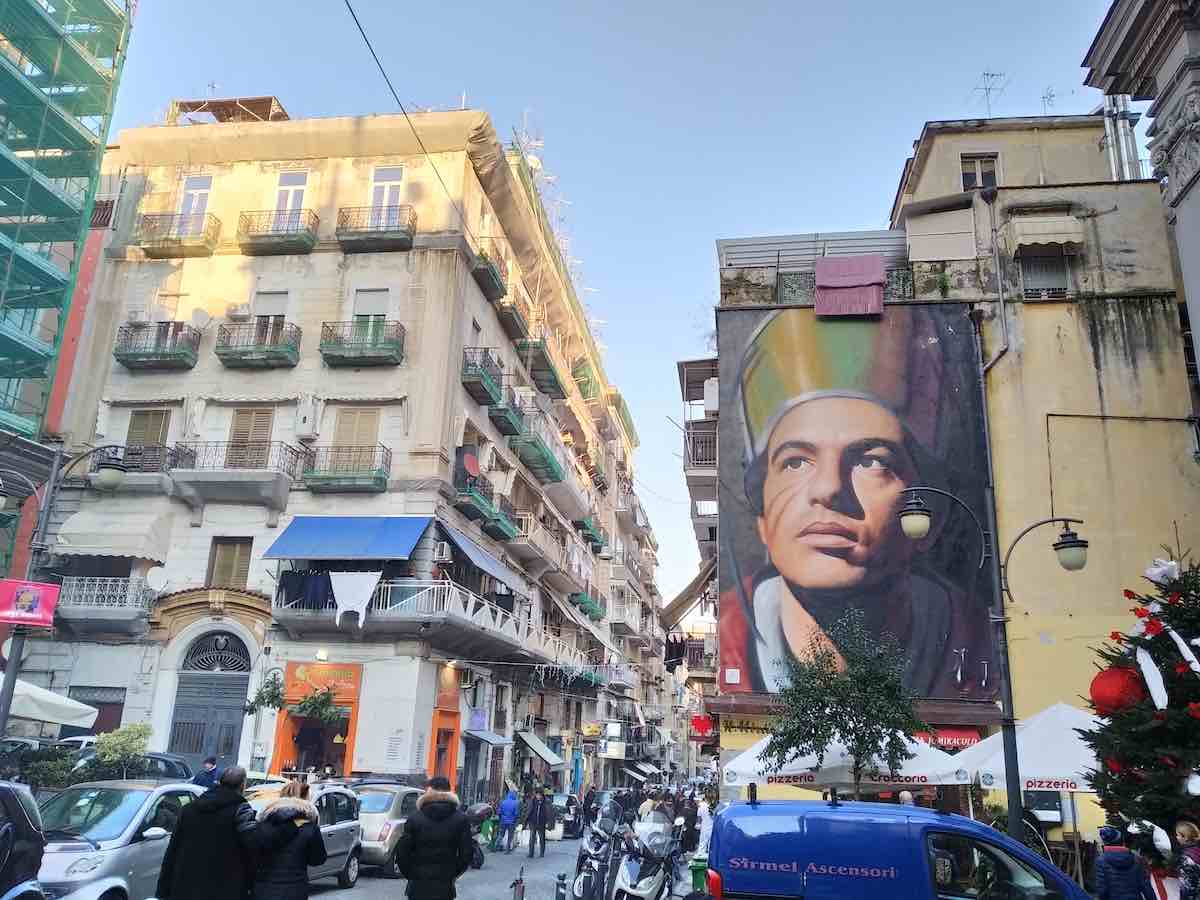
Now it is time to talk about a city that I have visited repeatedly, never having enough of.
A couple of hundred kilometers south of Rome is Naples, a city with a character all its own, poised along the stunning coast. What sets Naples apart isn’t just its geographical appeal; not even a blend of history, culture, and cuisine that invites you to immerse yourself in its embrace.
Naples, beyond its world-famous pizza legacy, boasts a distinct vibe where the locals’ warmth and genuineness sweep you into their world effortlessly. And as you delve into the heart of the city, you’ll find its historical and artistic riches captivating your senses.
Step into the Chapel-Museum San Severo, where the mesmerizing “Veiled Christ” sculpture awaits. This work of art, carved by Giuseppe Sanmartino, is a testament to the city’s deep connection with craftsmanship and spirituality. The sculpture’s intricate details create an illusion so lifelike that you’ll be left in awe of the human capacity to transcend the ordinary.
Another outstanding religious site in Naples is its cathedral, the Cathedral of San Gennaro. Here, three times a year, before the eyes of hundreds of believers, the miracle takes place. The blood of the saint, preserved in an ampulla, liquefies.
The Museum of the Treasure of St. Gennaro, also inside the cathedral, displays the many precious objects collected by the church over the centuries: not only cultural riches in Naples!
And just beyond, the Naples National Archaeological Museum holds a treasure trove of artifacts that harken back to the glories of antiquity. It’s a journey through time, a walk alongside the ancients, as you explore the remnants of civilizations long gone. This includes the artifacts found during Pompeii’s excavations.
Yet, Naples isn’t just a city of relics; it’s a living canvas of human interaction. Roam through the bustling streets, and you’ll witness a vibrant camaraderie that makes you feel like you belong.
The best time to visit one of the most beautiful cities near Rome is Christmas. From December to January, the historic center comes alive. A must-see is Via di San Gregorio Armeno Street, full of stores where artisans create nativity figurines also inspired by present-day characters.
And if you also stay for New Year’s Eve, you will witness Italy’s most spectacular New Year celebrations.
7. Gaeta

Step beyond the bustling streets of Rome and journey to the hidden gem of Gaeta – a coastal city that beckons with its unspoiled charm and authentic coastal charisma. Nestled along the Tyrrhenian Sea, Gaeta offers a serene escape from the urban frenzy, inviting you to explore its captivating blend of history, nature, and tranquility.
Gaeta’s stunning coastline is a sight to behold, offering a haven of sandy beaches and pristine waters that stretch as far as the eye can see.
For a glimpse into the town’s heritage, the towering Gaeta Castle stands as a proud sentinel, guarding centuries of stories within its walls.
The city’s vibrant pulse can be felt in its bustling local markets and lively piazzas, where community life thrives with infectious energy. Indulge in the delight of savoring fresh seafood, a culinary tradition deeply entwined with the town’s maritime roots. And as the sun gracefully dips below the horizon, Gaeta takes on a new persona – its nightlife comes alive, filling the air with laughter.
The perfect place to experience the afterglow is the Caboto Promenade, which is teeming with cafes, pubs, and restaurants. I recommend sampling the “tiella,” a typical stuffed focaccia from Gaeta that you will go crazy about.
If you are fond of breathtaking natural scenery, take a hike to the “split mountain.” This is a part of the coast characterized by three deep cuts where a Christian shrine stands. Various legends tell the origin of these splits, the most beautiful of which has a romantic and tragic background.
As you wander through Gaeta’s charming narrow streets, you’ll be enveloped in a tranquility that transports you far from the urban rush. The town’s authenticity and warm hospitality embrace you, making you feel as though you’ve found a cherished haven.
8. Siena

Siena, located in the heart of Tuscany, Italy, is a picturesque medieval city known for its history, art, and stunning architecture.
If your trip coincides with July 2nd or August 16th, you can experience the thrilling Palio di Siena, a historic horse race that takes place around Piazza del Campo. The atmosphere during this event is electric.
If you’re planning a trip from Rome to Siena, there are several attractions you shouldn’t miss:
- Piazza del Campo: This iconic shell-shaped square is the heart of Siena and one of the most famous medieval squares in the world. It’s surrounded by historic buildings and is the location of the Palio di Siena, a traditional horse race held twice a year.
- Siena Cathedral (Duomo di Siena): A masterpiece of Italian Gothic architecture, the Siena Cathedral is adorned with intricate carvings, stunning mosaics, and a beautiful facade. Don’t miss the opportunity to climb the tower for panoramic views of the city.
- Public Palace and Civic Museum: This Gothic palace houses the city’s town hall and a museum that features notable artworks, including the famous “Allegory of Good and Bad Government” frescoes by Ambrogio Lorenzetti.
- National Art Gallery of Siena: This art museum houses an impressive collection of Sienese paintings from the 13th to 15th centuries, providing insight into the artistic heritage of the region.
- Siena’s local cuisine is a delightful reflection of Tuscany’s culinary traditions, featuring fresh ingredients, simple flavors, and a focus on high-quality produce. Here are some dishes and culinary experiences you shouldn’t miss while visiting Siena:
- Pici: This traditional Tuscan pasta is thicker than spaghetti and is often handmade. It’s usually served with a variety of sauces, but the classic “pici all’aglione” features a tomato and garlic sauce.
- Ribollita: A hearty Tuscan soup made with bread, vegetables, beans, and kale. It’s a dish that has its roots in peasant cooking and is a comforting and flavorful option.
- Cinta Senese Pork: This breed of pork is native to the Siena area and is highly prized for its flavor. It’s used in various dishes, from cured meats to slow-cooked stews.
To make the most of your trip from Rome to Siena, you can take a train from Rome’s Termini station to Siena. The journey takes around 3 hours, offering scenic views of the Italian countryside along the way.
Furthermore, this city close to Rome can be your doorway to Val D’Orcia, the most iconic countryside of Italy that is listed as a UNESCO Heritage Site.
9. Ancona

Ancona is a coastal city located in the Marche region of Italy. While it might not be as widely known as some of Italy’s more famous cities, Ancona has its own unique charm and plenty to offer.
I was lucky enough to live in ancona for two months. What impressed me most was how crystal clear the city’s water was, even though it was home to a large commercial marina.
Here are some highlights and reasons to visit Ancona:
- Beautiful Coastline and Beaches: Ancona is situated along the Adriatic Sea and boasts stunning coastal landscapes. In and near Ancona there are both sandy and rocky beaches, making it a great destination for sunbathing, swimming, and enjoying the sea.
- Historic Architecture: The city has a rich history, and its architecture reflects this heritage. The Cathedral of San Ciriaco, perched on a hill overlooking the city, is a magnificent example of Romanesque architecture. The Arch of Trajan, a well-preserved Roman triumphal arch, is another historic landmark.
- Passetto di Ancona: This is a unique feature of the city—a nearly 200-meter-long elevated walkway that connects the old town to the seafront. It offers panoramic views of the coastline and provides a glimpse into Ancona’s history.
- Ancona Harbor: The city’s harbor is one of the largest on the Adriatic Sea and is an important hub for both commercial and passenger traffic. The harbor area is bustling with activity and offers a lively atmosphere.
- Regional Wine: The Marche region produces some excellent wines. Verdicchio, a white wine, is a local favorite and pairs wonderfully with seafood.
- Day Trips: Ancona serves as a convenient base for exploring the surrounding Marche region. You can take day trips to charming medieval towns like Urbino, known for its art and culture, or to the Frasassi Caves, a complex of stunning underground caverns.
- Gateway to Croatia: Ancona’s port also offers ferry connections to various Croatian destinations, making it a strategic point if you’re planning to explore both Italy and Croatia.
TIP: if you take a day trip to Ancona to the Conero Coast, a little bit further south, you'll find some of the best beaches in Italy, like Due Sorelle Beach.
All these features make Ancona one of the best cities to visit near Rome.
10. Bologna

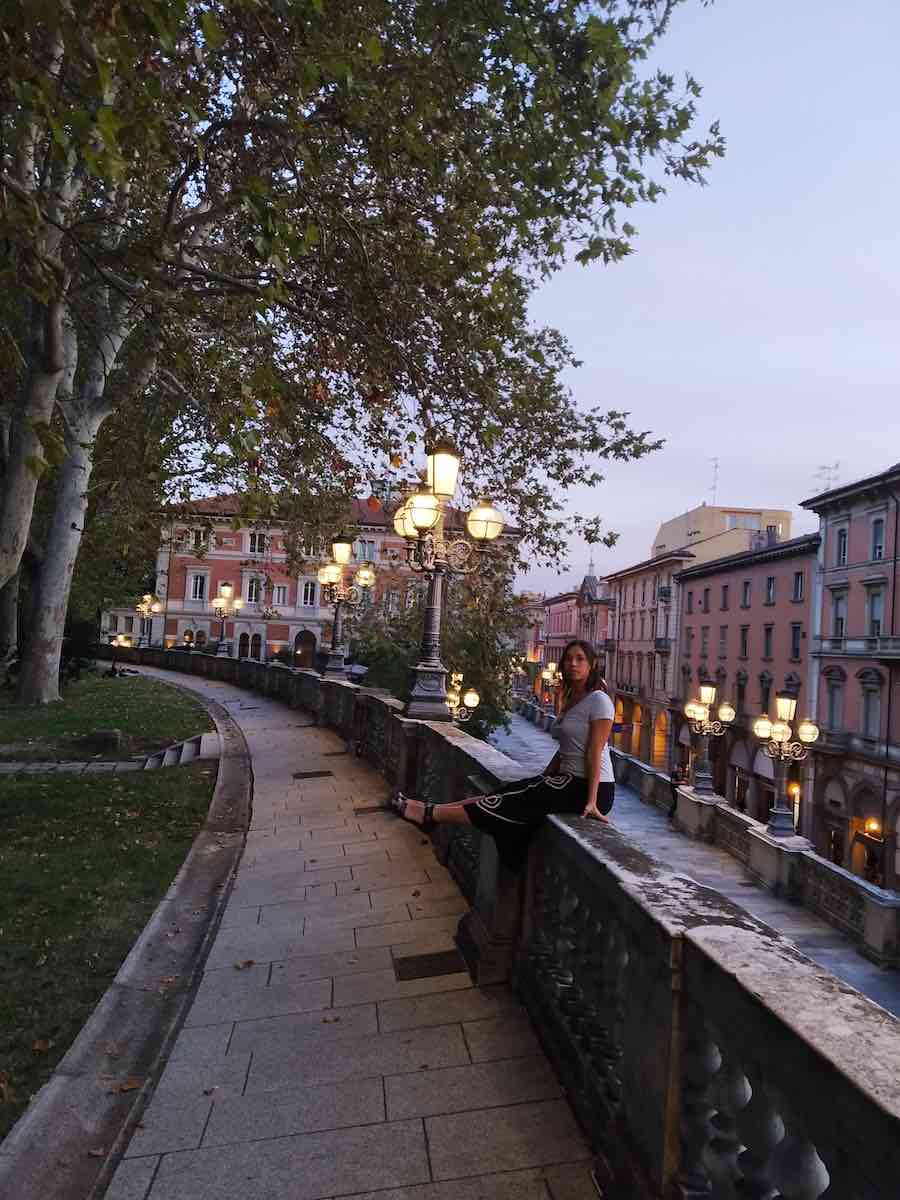
Traveling north from Rome, you will also find Bologna, one of Italy’s most beautiful cities.
I discovered it during my college years, when I would come every summer to attend a music festival. Good times, we would leave in the morning and return to Rome late at night, after dancing for hours!
I longed so much to study in Bologna; it is a perfect city for young people, of which there are really many here.
Bologna, the capital of the Emilia-Romagna region in Italy, is also a historic city with a lot to offer. Here are some compelling reasons to visit Bologna, even as a trip from Rome, along with its highlights:
- Culinary Delights: Bologna is often referred to as the “food capital” of Italy”. It’s the birthplace of many iconic Italian dishes, including Bolognese sauce (ragù), tortellini, and mortadella. The city is a paradise for food lovers, with countless trattorias, osterias, and markets serving up delectable local fare.
- Historic Architecture: Bologna boasts a beautifully preserved historic center with a mix of medieval, Renaissance, and Baroque architecture. The Two Towers (Due Torri), including the iconic leaning Asinelli Tower, are symbols of the city and offer panoramic views from the top.
- Piazza Maggiore: This main square is the heart of Bologna and features notable buildings such as the Basilica di San Petronio, one of the largest churches in the world. The square is a hub of cultural events, performances, and gatherings.
- Architectural Porticoes: Bologna is known for its extensive network of covered walkways, or porticoes. They provide shade in the summer and protection from rain in the winter. In fact, Bologna holds the record for having the longest continuous portico in the world.
- University of Bologna: Founded in 1088, the University of Bologna is one of the oldest universities in the world. The university has played a significant role in the city’s history and cultural identity. You can visit the historic university buildings and museums.
- Art and Culture: Bologna has a rich cultural scene, with numerous art galleries, museums, and theaters. The Archiginnasio, once the main building of the university, now houses the Anatomical Theatre and a library filled with historic volumes.
- Libraries and Bookshops: Bologna has a strong literary tradition. The city is home to several impressive libraries and charming independent bookshops, making it a haven for book enthusiasts.
- Mercato di Mezzo: This historic covered market is a great place to sample local products, including cheese, cured meats, and fresh produce. It’s a lively spot to experience the local food culture.
Bologna’s strategic location in central Italy makes it easily accessible from Rome by train. The high-speed train (Frecciarossa) journey takes around 2 hours.
Wrap up
In conclusion, the enchanting array of cities near Rome offers a kaleidoscope of experiences that extend beyond the bustling capital. I feel really lucky to live in this part of the world.
From the vibrant street life and rich history of Naples to the charming medieval lanes of Viterbo, each city paints a unique chapter in Italy’s cultural tapestry.
The artistic splendor of Florence, the medieval majesty of Siena, and the picturesque tranquility of Rieti present a rich mosaic of Italy’s past and present.
Ancona’s coastal allure and Bologna’s culinary prowess add further dimensions to this journey of discovery.
As you venture beyond Rome’s borders, you’ll uncover a world of captivating stories, exceptional cuisine, and breathtaking scenery that enriches the traveler’s heart and soul.
9nL5fLXj_
